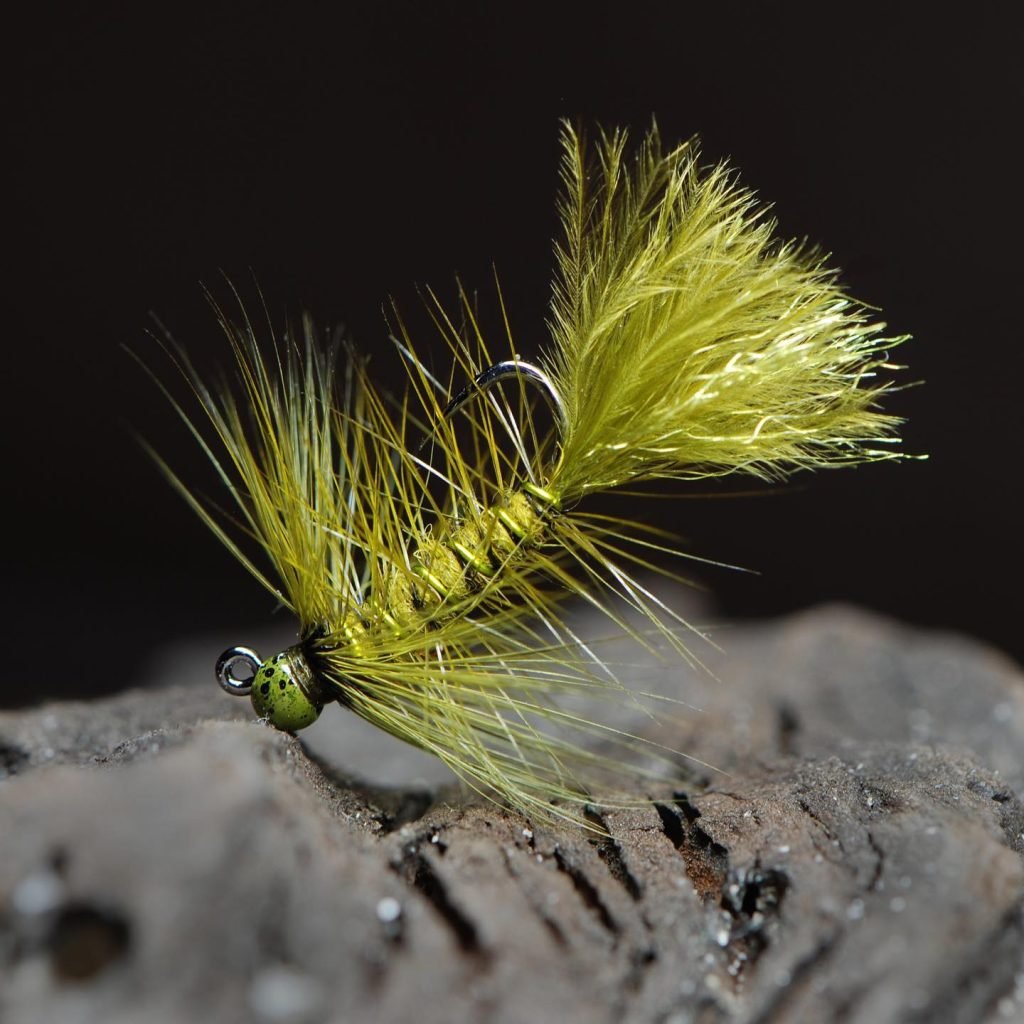Ask MidCurrent: Legend of the Woolly Bugger

Tie and image by Freddy Block
Question: Who invented the Woolly Bugger? What is it supposed to be?
~ Charles B.
Answer: Before we get to who invented it, let’s clarify that the Woolly Bugger is more than just a fly—it’s a freakin’ legend. Purported to have caught more species of fish than any other fly in the world, it’s likely to have caught the most numbers of fish of all kinds as well. The Woolly Bugger’s magnificence is four-pronged:
1. It’s an easy tie, relatively speaking. How many of us joined the Guild of the Vise with the whip finish of a Woolly Bugger?
2. It can be tied in various forms and colors—weighted, unweighted, beadhead, white, black, olive, brown, multi-color—you name a combination and it’s probably been tied.
3. Every configuration of the Woolly Bugger looks yummy in the water.
4. There’s no way to fish it wrong. If ever there was an “idiot fly,” the Woolly Bugger is it.
But there’s no shame in tying on the best dang fly in history even if you’re not an idiot. In fact, only an idiot wouldn’t have a dozen or so on hand at all times.
Birth of the Woolly Bugger
The Woolly Bugger was created by Russell Blessing, a talented fly tier from Harrisburg, Pennsylvania. In the early 1960s, Blessing set out to modify an existing pattern, the Woolly Worm, to make it more effective in attracting fish. His innovation would soon revolutionize the fly fishing world.
Blessing’s inspiration for the Woolly Bugger was the dobsonfly larva, also known as a hellgrammite. He took the basic structure of the Woolly Worm and made a modification that would shake the fly fishing world ever after: the addition of a marabou tail. This simple yet ingenious change gave the fly a more lifelike appearance and movement in the water.
The original Woolly Bugger featured a black marabou tail, an olive chenille body, and black hackle. This combination of materials created a fly that not only imitated dobsonfly larvae but also resembled various other aquatic creatures, including leeches and small baitfish.
What is the Woolly Bugger Supposed to Be?
One of the most remarkable aspects of the Woolly Bugger is its versatility. While it was initially designed to mimic dobsonfly larvae, anglers quickly discovered that it could represent a wide variety of aquatic life forms. Depending on how it’s fished and the specific materials used, the Woolly Bugger can imitate leeches, baitfish, crayfish, aquatic insects, hellgrammites, and even salamanders.
This adaptability is a key factor in the Woolly Bugger’s enduring popularity. It’s effective in various water conditions and can attract multiple fish species, including trout, bass, salmon, and even saltwater species.
Anatomy of the Woolly Bugger
The basic components of a Woolly Bugger include a tail made from soft, fluffy marabou feathers, which provide a lifelike, undulating motion in the water. The body is typically constructed from chenille, which gives the fly bulk and a fuzzy texture. Hackle is wrapped around the body, adding movement and the appearance of legs or fins. Some tiers add flashy materials or a bead head for extra attraction or weight.
Fishing Techniques
The Woolly Bugger’s effectiveness is further enhanced by its versatility in fishing techniques. Anglers can employ various methods to fish this fly, including stripping, which involves a quick retrieval that mimics a fleeing baitfish or active insect. Dead-drifting allows the fly to float naturally with the current, imitating a drifting food source. Swinging involves casting across the current and letting the fly swing downstream, presenting it to fish in different water columns. Basically, as long as its in the water, you’re fishing the Wooly Bugger right. Of course, this is an oversimplification and the best presentations will likely catch the most fish. But you get the point.
The Woolly Bugger’s Legacy
Since its creation, the Woolly Bugger has become one of the most popular and successful fly patterns in history. Its simplicity, effectiveness, and versatility have made it a favorite among both novice and experienced anglers.
Russell Blessing’s humble invention has stood the test of time, proving its worth in countless fishing scenarios across the globe. The Woolly Bugger’s ability to adapt to different fishing conditions and represent various prey items has cemented its place in fly fishing lore.
The Woolly Bugger started as a simple modification of the Woolly Worm fly. What began as an attempt to better imitate dobsonfly larvae evolved into one of the most versatile and effective fly patterns in existence. Its ability to represent multiple aquatic creatures and its effectiveness in various fishing techniques have made it an indispensable tool for anglers worldwide.











